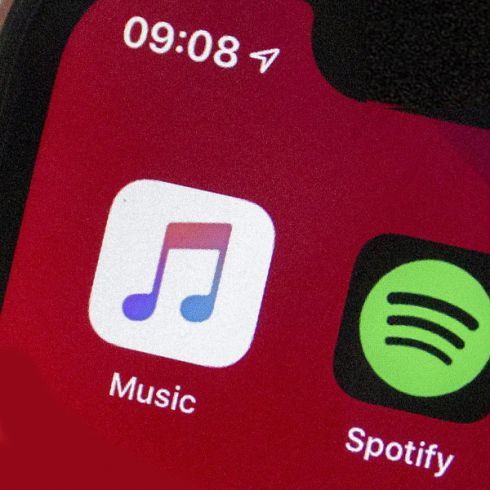
MUMBAI: According to the new report from Counterpoint Research finally sheds some light on what might be going on in the music streaming race between Spotify and Apple. Spotify reports its monthly active user (MAU) and subscriber data quarterly, but Apple and other competitors keep their numbers close to the vest. They aren't required to report them since their music services are typically a small part of their overall business.
According to Counterpoint Research, global online music streaming subscriptions grew 32% last year to 358 million. The group believes this growth was fuelled by original podcast content, which drove people toward platforms and eventually converted them into paying subscribers. Promotional price cuts in certain emerging markets and bundled offers from telecom companies also added to the growth.
Most interestingly, Counterpoint estimates that global online music streaming subscriptions will grow more than 25% to surpass 450 million subscriptions by the end of this year.
We know Spotify ended 2019 with 271 million MAUs and 124 million Premium subscribers. The corresponding figures at Apple, Amazon, and other competitors are more of a mystery.
But the Counterpoint report suggests Apple and Amazon ended last year with 19% and 15% shares, respectively, of the industry's paid subscribers. Taking that 358 million number for total subscribers, we can estimate that Apple and Amazon have about 68 million and 54 million paid subscribers, respectively. Spotify's 124 million Premium subscribers correspond with the 35% market share cited by Counterpoint, and that puts the company comfortably ahead of its rivals.
When you think about why Spotify has such a large global lead, it's important to consider mobile device market share. In the U.S., Apple's iOS mobile operating system is relatively popular, which allows Apple Music to be competitive with Spotify. But internationally, Alphabet's Android mobile operating system is much more prevalent than iOS. Some estimates suggest Android has a 72% market share of mobile operating systems globally compared to 27% for iOS. That helps explain why Spotify has almost twice the number of global paid subscribers as Apple Music.
According to the research, Growth rates appears that Spotify is widening its lead over No. 2 Apple Music as well.
We don't know precisely how many subscribers Apple had at the beginning of 2019, but according to the Financial Times, Apple Music had 56 million subscribers at the end of Nov. 2018. And in June of 2019, Eddy Cue, Apple's senior vice president of internet software and services, told a French magazine that Apple Music had more than 60 million subscribers.
Given those two data points, it would be reasonable to estimate Apple Music had about 57 million or so subscribers at the end of 2018. Combined with the 68 million figure from Counterpoint, that would suggest Apple Music grew its subscriber base 19%. In contrast, Spotify grew its Premium subscriber count 29%.
Spotify already had a dominant market position, but it appears to be pulling away from the pack on its road to capture more of this huge market opportunity. It's not surprising that Apple hasn't disclosed its actual subscriber numbers more clearly -- if it were growing faster than Spotify (or even keeping up with its rival), it would certainly let the world know about it. Investors should appreciate Spotify's leadership position is only strengthening.
When investing geniuses David and Tom Gardner have a stock tip, it can pay to listen. After all, the newsletter they have run for over a decade, Motley Fool Stock Advisor, has tripled the market.
David and Tom just revealed what they believe are the ten best stocks for investors to buy right now… and Apple wasn't one of them! That's right -- they think these 10 stocks are even better buys.